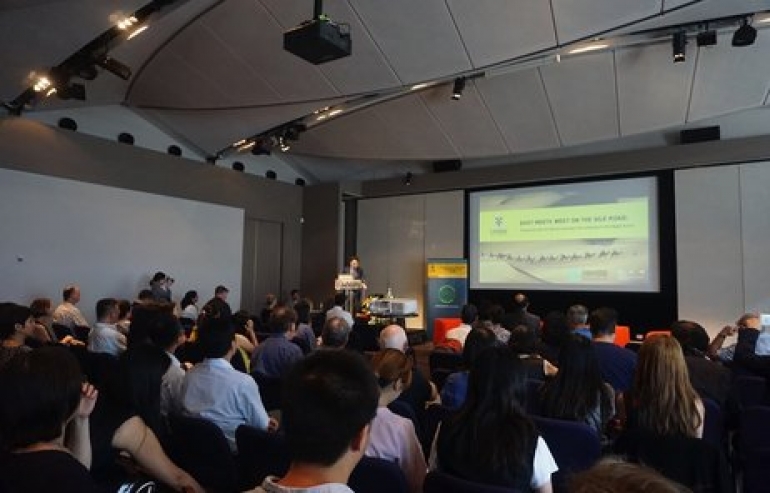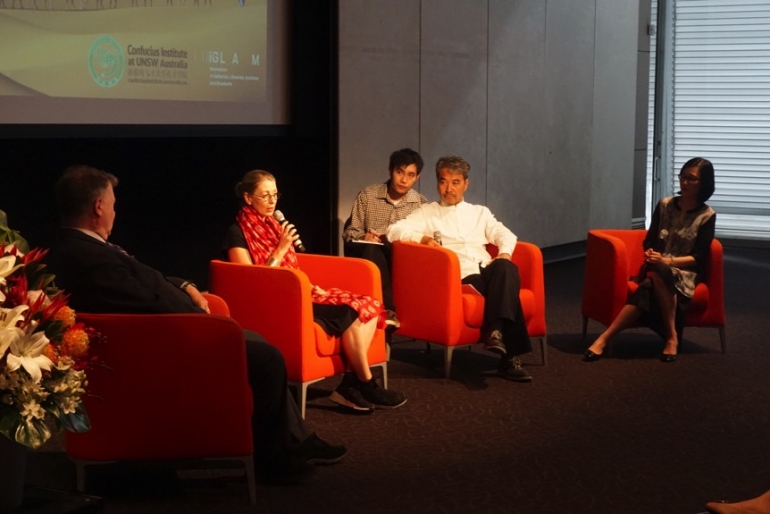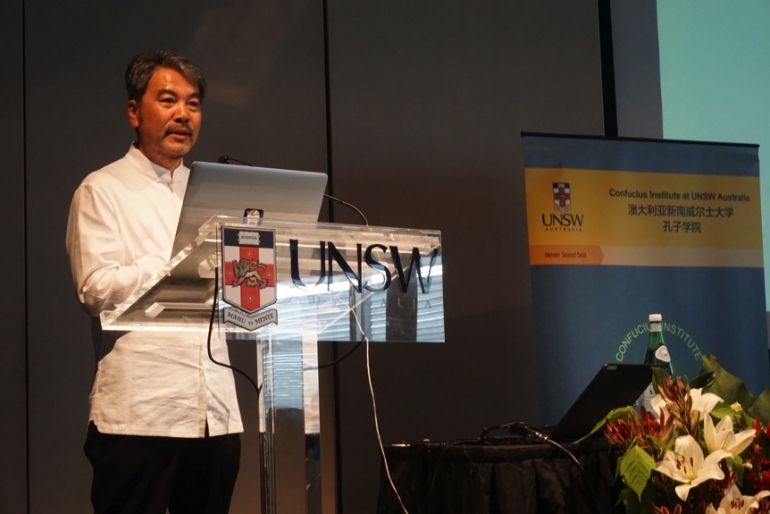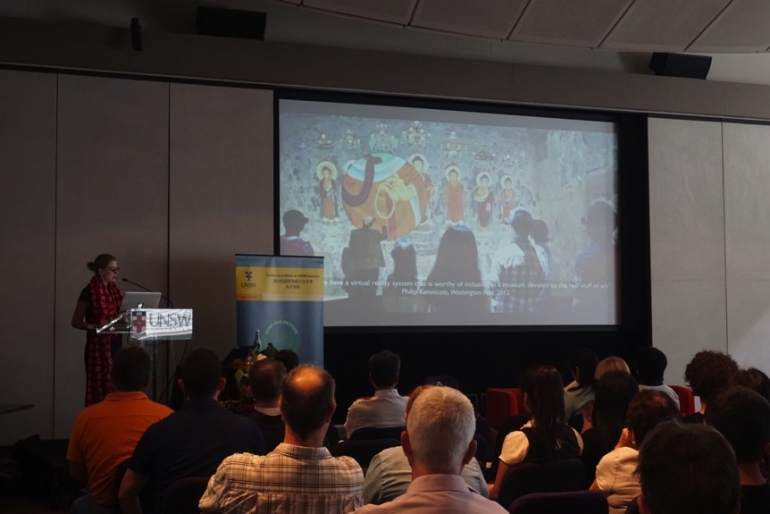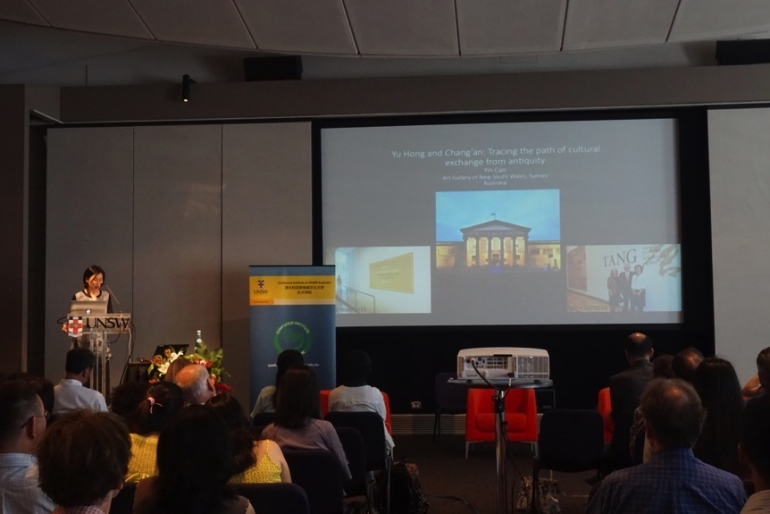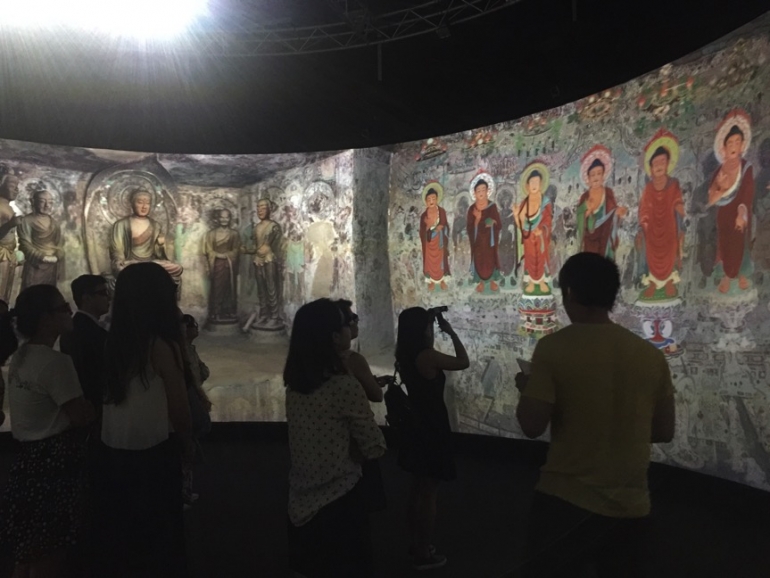On November 23, the Confucius Institute at UNSW held the forum “East Meets West on the Silk Road: Tracing the path of cultural exchange from antiquity to the digital future”, featuring panellists Professor Sun Zengtian, award-winning documentary director; Sarah Kenderdine, Professor at UNSW Art & Design and Director of Visualisation for UNSW’s EPICentre; and Yin Cao, Curator of Chinese Art at the Art Gallery of NSW. Each distinguished speaker shared their unique insights into East-West exchange along the Silk Road, then participated in a panel discussion and Q&A moderated by Dr Nicholas Morris, Adjunct Professor at UNSW Law.
In his opening address, Laurie Pearcey, Executive Director International and Director of the Confucius Institute at UNSW, stressed the importance of exploring the historical roots of East-West exchange to help frame present and future cooperation. Referring to China’s “One Belt, One Road” policy, Pearcey said, “It’s about bridging those movements in people, those movements in capital, goods and services, and I think that’s a really exciting initiative.”
Professor Sun Zengtian was first to present at the forum, drawing upon his own experience from shooting documentaries on the Silk Road. He gave a comprehensive overview of East-West exchange along the Silk Road from its earliest stages to its eventual decline, and presented fascinating footage from his documentary series “The New Silk Road”.
Following next, Professor Sarah Kenderdine transported the audience out of ancient times and into the digital age, showcasing some of her innovative work that has combined cultural heritage with immersive technologies. Among her projects are the 3D augmented-reality installation Pure Land: Inside the Mogao Grottoes at Dunhuang, the 3D documentation of South Chinese Kung Fu and Confucian Rites, and currently in production, the exhibition titled The Atlas of Maritime Buddhism.
Curator of Chinese Art at the Art Gallery of NSW, Yin Cao, further expanded the topic of cultural exchange through her expertise gained from the curation of A Silk Road saga and Tang: treasures from the Silk Road capital. Through the examination of archaeological artefacts and historical tales, Cao added yet another interesting perspective to the discussion of ‘East Meets West’.
The panel concluded with a discussion moderated by Dr Nicholas Morris, as the four experts exchanged views on history, status quo, preservation of cultural heritage, China’s “One Belt, One Road”, and took audience questions. The importance of deeper mutual understanding emerged as a recurrent theme in the day’s event.
In cooperation with Professor Kenderdine, the Confucius Institute at UNSW also held three screenings of Pure Land: Inside the Mogao Grottoes at Dunhuang at iCinema in a rare opening to the public. Visitors marvelled at the 3D technology which transported them inside the ancient Cave 220 rich with statues and murals.
